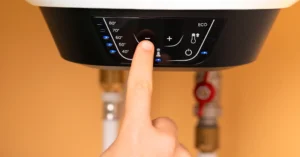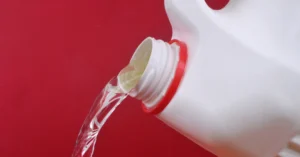Few plumbing emergencies create more damage, expense, and sheer disgust than a sewer backup. When wastewater reverses direction and flows back into your home, the results are not only unpleasant but potentially hazardous to your health and destructive to your property. In San Diego’s unique environment, sewer backups present specific challenges that require localized preventative approaches.
At Solid Plumbing & Drain Inc., we’ve spent 20 years helping homeowners throughout San Diego County prevent and resolve sewer backup issues. We’ve seen firsthand how proper maintenance can dramatically reduce the risk of these devastating events, saving homeowners thousands in emergency repairs and restoration costs.
In this comprehensive guide, you’ll discover the five most effective preventative maintenance strategies specifically tailored for San Diego homes. These proven approaches address our region’s unique challenges—from aggressive root intrusion to drought-related flow issues—and provide practical steps you can take to protect your home from sewer disasters.
Understanding San Diego’s Unique Sewer Challenges
Before diving into specific maintenance tips, it’s important to understand why San Diego properties face distinctive sewer risks compared to homes in other regions.
Clay Soil and Root Intrusion
San Diego County’s prevalent clay soil creates specific challenges for sewer systems:
– Clay soil expands and contracts dramatically with moisture changes, stressing and potentially misaligning pipes
– The dense nature of clay soil puts pressure on pipes, potentially causing cracks or separations at joints
– During drought periods, tree and shrub roots aggressively seek moisture sources, making sewer lines prime targets
– Many drought-resistant plants common in San Diego landscaping (eucalyptus, pepper trees, certain palms) have particularly invasive root systems
– Clay soil’s poor drainage can create waterlogged conditions around pipes during rare heavy rains
These soil conditions make root intrusion the leading cause of sewer backups in established San Diego neighborhoods, particularly in areas with mature landscaping like Point Loma, Kensington, and La Jolla.
Aging Infrastructure Throughout the County
San Diego’s diverse housing stock spans multiple eras of development, each with its own sewer vulnerabilities:
– Pre-1950s homes often have original clay or Orangeburg sewer pipes approaching the end of their functional lifespan
– Homes built in the 1950s-1970s frequently have concrete or early plastic pipes that deteriorate in our soil conditions
– Even newer homes can have installation issues that emerge over time, particularly at connection points
– Many neighborhoods have aging municipal sewer systems that can contribute to backup issues
– Sewer line materials and installation practices have varied dramatically across different development periods
In established neighborhoods like Clairemont, Allied Gardens, and La Mesa, these age-related factors significantly impact sewer reliability and backup risk.
Drought and Water Conservation Effects
Southern California’s water conservation measures inadvertently create sewer challenges:
– Reduced water usage means less flow to carry waste effectively through the system
– Low-flow fixtures may not provide sufficient volume to move solid waste completely
– Longer periods between substantial water usage allow debris to settle and harden
– Concentrated waste due to water conservation can accelerate pipe deterioration
– Drought conditions cause soil shifting that can damage or misalign underground pipes
These factors are particularly relevant in water-conscious communities like Scripps Ranch and Rancho Bernardo, where conservation efforts can inadvertently increase sewer maintenance needs.
Preventative Tip #1: Schedule Regular Video Sewer Inspections
The foundation of effective sewer maintenance is regular professional inspection using specialized camera equipment.
Why Camera Inspections Are Essential in San Diego
Video inspection technology provides critical insights specific to our region’s challenges:
– Identifies root intrusion before it causes complete blockages
– Detects pipe misalignment from soil shifting during drought/rain cycles
– Reveals early signs of pipe deterioration from San Diego’s aggressive soil conditions
– Locates accumulated debris before it reaches critical mass
– Documents pipe condition for insurance and property records
– Precisely pinpoints issues for targeted maintenance rather than guesswork
These inspections serve as an early warning system, allowing for planned maintenance rather than emergency response.
Recommended Inspection Schedule
Based on our experience with thousands of San Diego homes, we recommend the following inspection intervals:
– Homes over 40 years old: Annual camera inspection
– Homes 20-40 years old: Every 2 years
– Homes under 20 years old: Every 3-5 years
– Properties with previous sewer issues: Annual inspection regardless of age
– Homes with mature trees near sewer lines: Annual inspection
– Before purchasing any home: Always inspect regardless of age
These intervals should be adjusted based on specific property conditions and previous findings.
What to Expect During a Professional Inspection
A proper sewer camera inspection includes:
– Access through an existing cleanout or temporarily removed toilet
– Insertion of a high-definition camera attached to a flexible cable
– Systematic examination of the entire line from house to municipal connection
– Measurement and marking of problem areas for future reference
– Video recording for documentation and comparison with future inspections
– Written report detailing findings and recommendations
– Cost typically ranges from $250-350 in the San Diego market
This process typically takes 30-60 minutes and provides invaluable information about your sewer system’s condition.
Preventative Tip #2: Implement Strategic Root Management
In San Diego’s climate, aggressive root management is perhaps the most important preventative measure for sewer protection.
Understanding Root Behavior in Southern California
Root intrusion in San Diego follows patterns influenced by our unique environment:
– Drought conditions drive roots to seek reliable water sources like sewer lines
– Many native and drought-resistant plants develop particularly aggressive root systems
– Roots typically enter through small cracks or joint separations, then expand
– Once inside, roots thrive in the nutrient-rich, moist environment
– Root growth accelerates during our mild winter and spring seasons
– Even small plants can develop extensive root systems in our climate
This root behavior makes proactive management essential rather than optional in our region.
Professional Root Maintenance Approaches
Several professional techniques effectively manage root intrusion:
– Mechanical cutting: Specialized cutting tools physically remove roots from the pipe interior
– Hydro-jetting: High-pressure water removes roots and cleans pipe walls
– Chemical treatments: Copper sulfate or specialized foaming agents kill roots without harming plants
– Barrier installation: Physical barriers installed around pipes in high-risk areas
– Pipe lining: Creating a seamless interior pipe surface that prevents root penetration
For most San Diego homes, we recommend a combination approach: mechanical removal followed by targeted chemical treatment, typically performed annually for properties with known root issues.
Landscaping Strategies for Sewer Protection
Strategic landscaping decisions significantly reduce root-related sewer risks:
– Avoid planting trees and large shrubs within 10 feet of your sewer line
– Choose less aggressive species when planting near utility lines
– Consider removing particularly problematic existing trees (eucalyptus, willows, pepper trees)
– Install root barriers when keeping trees near sewer lines is unavoidable
– Direct irrigation away from areas above sewer lines to discourage root growth
– Consider hardscaping directly above sewer paths
These preventative landscaping approaches are particularly important in newer San Diego developments where trees are still maturing and future root problems can be avoided.
Preventative Tip #3: Practice Smart Water Usage Habits
In San Diego’s water-conscious environment, balancing conservation with sewer health requires thoughtful water usage.
The Conservation-Sewer Health Balance
Water conservation and sewer maintenance aren’t mutually exclusive:
– Strategic “sewer flushing” can maintain line health while still conserving overall
– Distributing water usage throughout the day helps maintain flow
– Certain fixtures impact sewer health more than others
– Understanding which activities benefit sewer lines helps prioritize water usage
– Small adjustments in habits can maintain sewer health without significant water waste
This balanced approach is particularly important in San Diego’s tiered water pricing environment, where conservation remains financially important.
Specific Habits That Prevent Backups
These practical water usage habits significantly reduce backup risk:
– Run a full-sized load in your washing machine weekly (preferably with warm water)
– Flush toilets after each solid waste deposit rather than multiple uses
– Run your dishwasher regularly rather than extensive handwashing
– Allow shower water to run for 30 seconds after use
– Pour a gallon of water down rarely-used drains monthly
– Run garbage disposals with cold water for 30 seconds after use
These habits ensure sufficient water volume moves through your system regularly, preventing debris accumulation.
Smart Conservation That Doesn’t Compromise Sewer Health
These conservation approaches maintain sewer health while saving water:
– Collect “warm-up” shower water in buckets for landscape irrigation
– Use high-efficiency washing machines that clean effectively with less water
– Install dual-flush toilets that provide appropriate water volume for solid waste
– Reuse greywater for landscape irrigation rather than reducing necessary flushing
– Time water-intensive activities (laundry, dishwashing, showers) throughout the day
– Consider water recycling systems for new construction or major remodels
These strategies, particularly relevant in San Diego’s conservation-minded communities, allow you to maintain sewer health while still being environmentally responsible.
Preventative Tip #4: Install and Maintain Crucial Protective Devices
Several specialized devices provide valuable protection against sewer backups in San Diego homes.
Backwater Valves: Essential Protection
Backwater valves provide critical defense against municipal sewer backups:
– Function: One-way valves that allow wastewater to exit but prevent reverse flow
– Installation: Typically placed at the connection point between private and municipal lines
– Cost in San Diego market: $1,200-2,500 installed, depending on accessibility
– Maintenance: Require annual inspection and cleaning to ensure proper operation
– Particularly valuable in: Low-lying areas, neighborhoods with known municipal sewer issues, coastal communities with tidal influences
– Code requirements: Now required in many new San Diego constructions and major remodels
For homes in areas like Mission Valley, Bay Park, and coastal communities where municipal backups are more common, these devices provide essential protection.
Cleanouts: Access Points for Maintenance
Properly placed cleanouts dramatically improve maintenance capabilities:
– Function: Provide direct access to sewer lines for inspection and cleaning
– Recommended locations: Near house, at property line, and at major direction changes
– Cost to add if missing: $300-800 per cleanout in the San Diego market
– Maintenance: Keep accessible, clearly marked, and properly capped
– Particularly valuable in: Older homes that may have limited existing access points
– Code requirements: Modern codes require multiple cleanouts, but many older San Diego homes lack sufficient access
Adding strategically placed cleanouts represents one of the most cost-effective investments in long-term sewer maintenance capability.
Floor Drain Protection
For homes with basement or lower-level floor drains:
– Function: Prevent sewer gas and potential backups through floor drains
– Options: One-way drain plugs, standpipe extensions, or automatic drain covers
– Cost: $25-300 depending on type and installation complexity
– Maintenance: Regular cleaning and testing to ensure proper operation
– Particularly valuable in: Split-level homes, homes with basement bathrooms or laundry rooms
– Special considerations: Must match specific drain configurations
While less common in many San Diego homes, these protections are crucial for properties with below-grade plumbing fixtures, particularly in areas like Del Cerro and Mt. Helix with more split-level construction.
Preventative Tip #5: Adopt Proper Disposal Practices
What goes down your drains significantly impacts your sewer system’s health, with certain items posing particular problems in San Diego’s conditions.
Kitchen Disposal Practices
The kitchen represents a primary source of problematic sewer debris:
– Never dispose of grease or oil down drains (they solidify in pipes, particularly in cooler coastal areas)
– Avoid putting fibrous vegetables through garbage disposals (artichoke leaves, celery, corn husks)
– Limit coffee grounds in drains (they accumulate and don’t break down)
– Dispose of rice and pasta in trash (they expand and create blockages)
– Use sink strainers to catch food particles
– Run cold water before, during, and after disposal use
These practices prevent the formation of grease dams and food waste accumulation that commonly contribute to San Diego sewer backups.
Bathroom Disposal Practices
Bathroom habits significantly impact sewer health:
– Flush only human waste and toilet paper (nothing else is designed to break down properly)
– Never flush “flushable” wipes (they don’t break down in our water-conserving systems)
– Dispose of feminine hygiene products in trash receptacles
– Install hair catchers in all shower and tub drains
– Avoid disposing of dental floss, cotton swabs, or similar items in toilets
– Consider toilet paper that breaks down easily, particularly in older systems
These practices prevent the accumulation of non-degradable materials that commonly cause blockages in San Diego’s water-efficient sewer systems.
Outdoor and Garage Disposal Considerations
Outdoor areas often connect to sewer systems in ways homeowners don’t consider:
– Never dispose of paint, chemicals, or automotive fluids in drains
– Keep yard waste away from outdoor drain openings
– Cover outdoor drains during landscape maintenance
– Be cautious with root-killing products that may damage pipes
– Properly dispose of swimming pool backwash according to local regulations
– Direct rainwater away from sewer cleanouts
These practices prevent contamination and blockages from outdoor sources, particularly important in San Diego’s indoor-outdoor lifestyle where these connections are common.
When to Call a Professional: Warning Signs of Potential Backups
Even with diligent preventative maintenance, it’s crucial to recognize early warning signs that professional intervention is needed.
Early Warning Signs in Multiple Fixtures
System-wide symptoms indicate potential main line issues:
– Multiple drains slowing simultaneously
– Gurgling sounds from drains when toilets flush
– Water backing up in shower when washing machine drains
– Toilets bubbling or water level fluctuating
– Sewage odors from multiple drains
– Water backing up into tubs or showers
If you notice even one of these signs—especially if it involves more than one drain—it’s time to call a professional immediately. These symptoms often indicate a developing blockage in your main sewer line, and early intervention can mean the difference between a simple cleaning and a full-blown backup with costly water damage.
Prevention Is Always Cheaper Than Cleanup
Sewer backups are messy, expensive, and disruptive—but most are also preventable. The key is consistent maintenance tailored to San Diego’s unique soil, climate, and infrastructure challenges. A combination of annual inspections, smart landscaping, strategic water use, protective devices, and proper waste disposal can significantly reduce your risk.
By following these five tips and staying alert to early warning signs, you’ll not only prevent disasters but also extend the life of your sewer system and protect your property value.
Let us help you avoid the mess before it starts.




